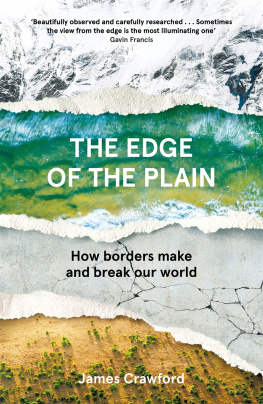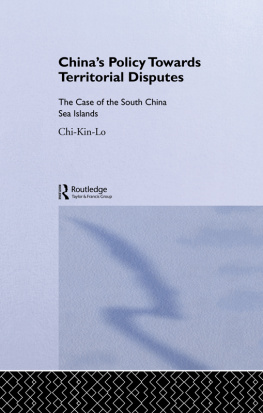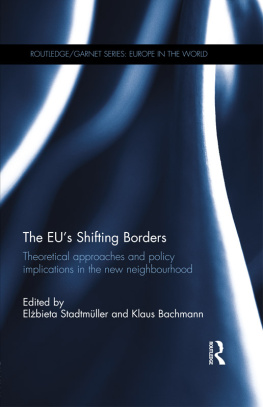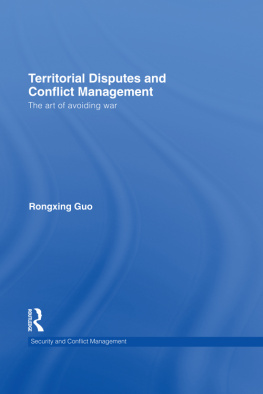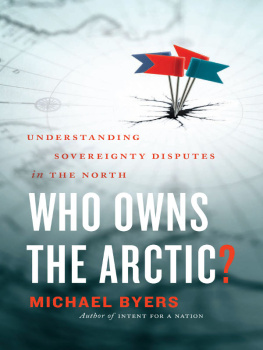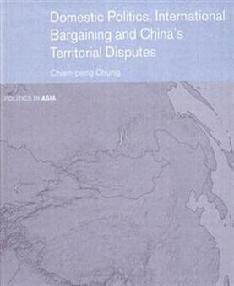Nadav G. Shelef - Homelands: Shifting Borders and Territorial Disputes
Here you can read online Nadav G. Shelef - Homelands: Shifting Borders and Territorial Disputes full text of the book (entire story) in english for free. Download pdf and epub, get meaning, cover and reviews about this ebook. year: 2020, publisher: Cornell University Press, genre: Politics. Description of the work, (preface) as well as reviews are available. Best literature library LitArk.com created for fans of good reading and offers a wide selection of genres:
Romance novel
Science fiction
Adventure
Detective
Science
History
Home and family
Prose
Art
Politics
Computer
Non-fiction
Religion
Business
Children
Humor
Choose a favorite category and find really read worthwhile books. Enjoy immersion in the world of imagination, feel the emotions of the characters or learn something new for yourself, make an fascinating discovery.
- Book:Homelands: Shifting Borders and Territorial Disputes
- Author:
- Publisher:Cornell University Press
- Genre:
- Year:2020
- Rating:5 / 5
- Favourites:Add to favourites
- Your mark:
- 100
- 1
- 2
- 3
- 4
- 5
Homelands: Shifting Borders and Territorial Disputes: summary, description and annotation
We offer to read an annotation, description, summary or preface (depends on what the author of the book "Homelands: Shifting Borders and Territorial Disputes" wrote himself). If you haven't found the necessary information about the book — write in the comments, we will try to find it.
Homelands: Shifting Borders and Territorial Disputes — read online for free the complete book (whole text) full work
Below is the text of the book, divided by pages. System saving the place of the last page read, allows you to conveniently read the book "Homelands: Shifting Borders and Territorial Disputes" online for free, without having to search again every time where you left off. Put a bookmark, and you can go to the page where you finished reading at any time.
Font size:
Interval:
Bookmark:

Copyright 2020 by Cornell University
All rights reserved. Except for brief quotations in a review, this book, or parts thereof, must not be reproduced in any form without permission in writing from the publisher. For information, address Cornell University Press, Sage House, 512 East State Street, Ithaca, New York 14850. Visit our website at cornellpress.cornell.edu.
First published 2020 by Cornell University Press
Library of Congress Cataloging-in-Publication Data
Names: Shelef, Nadav G. (Nadav Gershon), 1974 author.
Title: Homelands : shifting borders and territorial disputes / Nadav G. Shelef.
Description: Ithaca [New York] : Cornell University Press, 2020. | Includes bibliographical references and index.
Identifiers: LCCN 2019044592 (print) | LCCN 2019044593 (ebook) | ISBN 9780801453489 (hardcover) | ISBN 9780801479922 (paperback) | ISBN 9781501712364 (pdf) | ISBN 9781501709722 (epub)
Subjects: LCSH: Boundaries. | Territory, National. | Boundary disputes. | Geopolitics. | Irredentism. | Nationalism.
Classification: LCC JC323 .S548 2020 (print) | LCC JC323 (ebook) | DDC 320.1/2dc23
LC record available at https://lccn.loc.gov/2019044592
LC ebook record available at https://lccn.loc.gov/2019044593
To M., A., and R., with love
This book started where my previous one ended. That book, grounded in the Israeli context, consistently sparked questions about the potentially exceptional character of Israeli nationalism and its evolution: perhaps the kinds of transformations that shaped the ways Israelis thought about the fundamental aspects of their polity did not occur in other cases? While there was little theoretical reason to believe that was the case, I had no empirical basis from which to answer the question. This book is my answer. Focusing on a single dimension of nationalist ideologythe location of the homelandit shows that nationalism evolves in other contexts as well.
I have benefited from the support and feedback of many friends and colleagues over the years that it took to complete this project. The data collection and empirical analysis could not have been completed without the painstaking and indefatigable help of a generation of students at the University of WisconsinMadison. Sam Alhadeff, Shaan Amin, Carlo Annelli, Adam Auerbach, Sanja Badanjak, Nick Barnes, Evgeny Finkel, Simon Haeder, Anne Jamison, Ian McQuistion, Clarence Moore, Susanne Mueller-Redwood, Erin Pelletier, and Katie Robiadek all made significant contributions to this project.
My colleagues, especially Mark Copelovitch, Yoi Herrera, Helen Kinsella, Andy Kydd, Jon Pevehouse, Nils Ringe, and Jessica Weeks, not only read parts of the manuscript but their feedback also shaped it in more ways than I can enumerate. I could not ask for better colleagues and friends. I also benefited from comments by Emanuel Adler, Boaz Atzili, Michael Barnett, Fabio Capano, Lars-Erik Cederman, Nisha Fazal, Stacie Goddard, Hein Goemans, Oded Haklai, Ron Hassner, Marc Lynch, Harris Mylonas, Wendy Pearlman, Bill Quandt, and Ken Schultz, among many others at conferences and workshops at which portions of the project were presented. They all made the work better. It goes without saying that any errors are my own and persist despite their best efforts. I am also grateful for the support, forbearance, and occasional prod from Roger Haydon. My thanks also go to the reviewers whose comments and suggestions made this a much better book.
Portions of chapters 1, 5, and 6 were published in Unequal Ground: Homelands and Conflict, International Organization 70, no. 1 (2016): 3363, Cambridge University Press, reprinted with permission. Portions of chapter 4 were previously published in Which Land Is Our Land?: Domestic Politics and Change in the Territorial Claims of Stateless Nationalist Movements, Security Studies 23, no. 4 (2014): 75486 (with Harris Mylonas), https://www.tandf-online.com/. A version of some of the material in chapter 5 was published in How Homelands Change, Journal of Conflict Resolution 64, no. 23 (2020): 490517, https://doi.org/10.1177/0022002719863470. I thank these journals for permission to reprint versions of these articles.
Finally, I could not have completed this book without the love and support of my family. M., A., and R., thank you.
| AMG | Allied Military Government |
| CDU | Christian Democratic Party (Germany) |
| CSU | Christian Social Union (Germany) |
| DC | Christian Democracy Party (Italy) |
| EPLF | Eritrean Peoples Liberation Front |
| FBIS | Foreign Broadcast Information Service |
| FDP | Free Democratic Party (Germany) |
| FRG | Federal Republic of Germany |
| FTT | Free Territory of Trieste |
| GDR | German Democratic Republic |
| ICJ | International Court of Justice |
| ICOW | Issue Correlates of War |
| JCP | Jordanian Communist Party |
| MSI | Italian Social Movement |
| PCI | Italian Communist Party |
| PDFLP | Democratic Front for the Liberation of Palestine |
| PFLP | Popular Front for the Liberation of Palestine |
| PLO | Palestine Liberation Organization |
| PNA | Palestinian National Authority |
| PNC | Palestinian National Council |
| SED | East German Communist Party |
| SPD | Social Democratic Party (Germany) |
| TPLF | Tigray Peoples Liberation Front |
| UNRWA | United Nations Relief and Works Agency for Palestine Refugees in the Near East |
Few things are as instinctively durable as a nations desire for its homeland. The Jewish pining for the land of Israel, the Palestinian struggle for the same territory, the Hungarian dream of the pre-Trianon borders, and the Serbian drive to regain Greater Serbia are all piercing reminders of the persistence of lost homeland territory in the national imaginationand of the conflict that often follows. Our instincts, however, are only partially right. Such poignant cases notwithstanding, there are many, often unnoticed, instances of once-voluble claims to lost homeland territory melting away. Indian nationalists no longer claim Lahore as part of Mother India. Germans rarely seek the return of the German homeland east of the Oder and the Neisse Rivers. Even Italian nationalists, whose aspirations for their terra irredenta (unredeemed land) along the Adriatic coast gave us the term irredentism, no longer widely include Istria or Dalmatia within the geographical scope of the Italian homeland.
This book shows how such transformations in the area included in the homeland come about and explores their consequences for international conflict. It argues that contractions in the area included in what counts as the homeland occur as a result of a process rooted in domestic political competition. New, more modest, understandings of the homeland, where they are associated with domestic political success, displace more expansive ones. Over time, land left out of these understandings loses its status as part of the homeland. Such contractions in the area considered part of the homeland, in turn, are critical for parsing the variation in territorial partitions ability to resolve conflict. Partitions workthat is, they resolve existing conflict without leading to further irredentist conflictwhen the parts of the homeland that remain on the other side of the new border cease to be seen as appropriately part of the homeland.
Next pageFont size:
Interval:
Bookmark:
Similar books «Homelands: Shifting Borders and Territorial Disputes»
Look at similar books to Homelands: Shifting Borders and Territorial Disputes. We have selected literature similar in name and meaning in the hope of providing readers with more options to find new, interesting, not yet read works.
Discussion, reviews of the book Homelands: Shifting Borders and Territorial Disputes and just readers' own opinions. Leave your comments, write what you think about the work, its meaning or the main characters. Specify what exactly you liked and what you didn't like, and why you think so.


